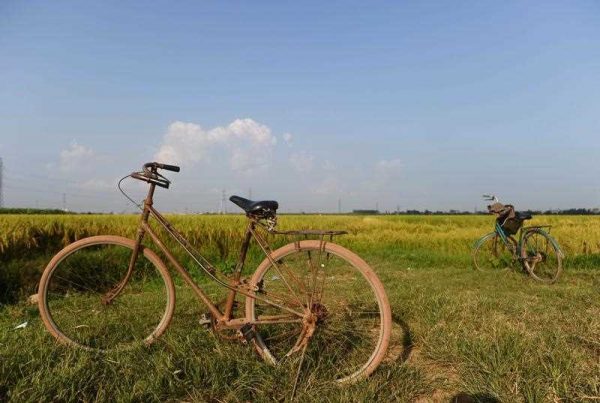The Vietnam economy showed further signs of continued macroeconomic stabilisation throughout 2014. The headline inflation rate fell to between 3 and 4 per cent, the current account balance has been in positive territory three years in a row, the parallel and interbank rates were well within the official exchange rate band, and international reserves rose above the level in the pre-global financial crisis days of 2006–7.
Manufactured exports, particularly in mobile telephone parts and components, grew rapidly throughout the year. They have already overtaken garments exports as the number one export earner, placing Vietnam firmly in the global production network of hi-tech parts and components trade. In a little over 10 years, exports of electronic goods and components have grown from less than 4 per cent of Vietnam’s total export basket to more than 34 per cent, currently constituting the single most important driver of growth in an otherwise subdued domestic market.
The glowing picture on the trade front was dimmed, for a time, by political tensions with China during 2014. Whilst those tensions are likely to continue in the background, the heavy reliance of Vietnamese industry on imported inputs from China indicates a longer-term issue of a lack of industrial deepening — exacerbated by the dominance of large SOEs in upstream industries. Ongoing structural reform of SOEs is crucial for future development of the economy.
For the first eight months of 2014, the number of domestic businesses that were shut down or suspended rose by 13 per cent compared with the same period last year. It is estimated to exceed the record high of nearly 61,000 businesses that shut down during 2013. The banking sector continues to be weighed down by bad debts, and credit growth is again below the official target. The Government has admitted that the large conglomerates of SOEs and their many subsidiaries are responsible for over half of the bad debts.
As a result, it is not surprising that GDP growth is estimated by the IMF to be around 5.5 per cent this year, perhaps edging up to 5.6 per cent in 2015 — substantially below the trend growth of between 7 and 8 per cent in the pre- global financial crisis years.
Fiscal policy has been counter-cyclical, and fiscal deficits have been fluctuating around 6 and 7 per cent of GDP in recent years. This, together with falling oil revenue, has meant that the level of public debt is projected to rise to about 55 per cent by end-2014. Under normal circumstances, these levels of debt should not be a matter of concern, particularly as much of Vietnam’s external debts are in the form of long-term concessional aid funds that are quite stable.
But two issues stand out in the current economic climate.
Global economic conditions have deteriorated in the second half of 2014, with potentially volatile capital flows impacting negatively on many emerging market economies, including Vietnam. This means that the governance of public debt matters as it affects how investors perceive the country’s macroeconomic vulnerability. In the past several years, since the first issuance of the Vietnamese government’s domestic debt, the maturity period has been quite short — less than 7 years.
More worryingly, agencies other than the Ministry of Finance have been able to issue these debts. It is important that the central government is able to take effective control of public borrowings, and not repeat the mistakes of 2006–7 when the central government lost control of the large conglomerates of SOEs and their myriad of subsidiaries.
The Prime Minister has in recent months announced some 430 SOEs to be sold off by 2015. These include large conglomerates such as the textiles group Vinatex, the ship-building giant Vinashin and the ports and shipping authority Vinalines, amongst others. This will be no mean feat. Vinatex alone has around 120 subsidiaries covering all aspects of the textile industry from spinning and weaving to distribution and retail. It is also heavily exposed to the property sector, finance and banking. In July this year, Vinatex had an initial public offering in which it failed to sell all its shares, and the State is still left with 51 per cent ownership. This is despite good prospects for Vietnam’s textile and garments sector with the EU–Vietnam FTA and of course the Trans-Pacific Partnership agreement further down the track.
There are serious questions about the feasibility of this more rapid pace of SOE reform. As for Vinashin and Vinalines, government investigations in the last couple of years have revealed gross mismanagement and malfeasance. Unless these problems are appropriately addressed and resolved, the prospects of successful IPOs would also be dim.
This leaves Vietnam’s economic story for 2014 as one of slow and steady growth, with plenty to be positive and tentative about for 2015.
Suiwah Leung is Adjunct Associate Professor of Economics at the Crawford School of Public Policy, The Australian National University.

